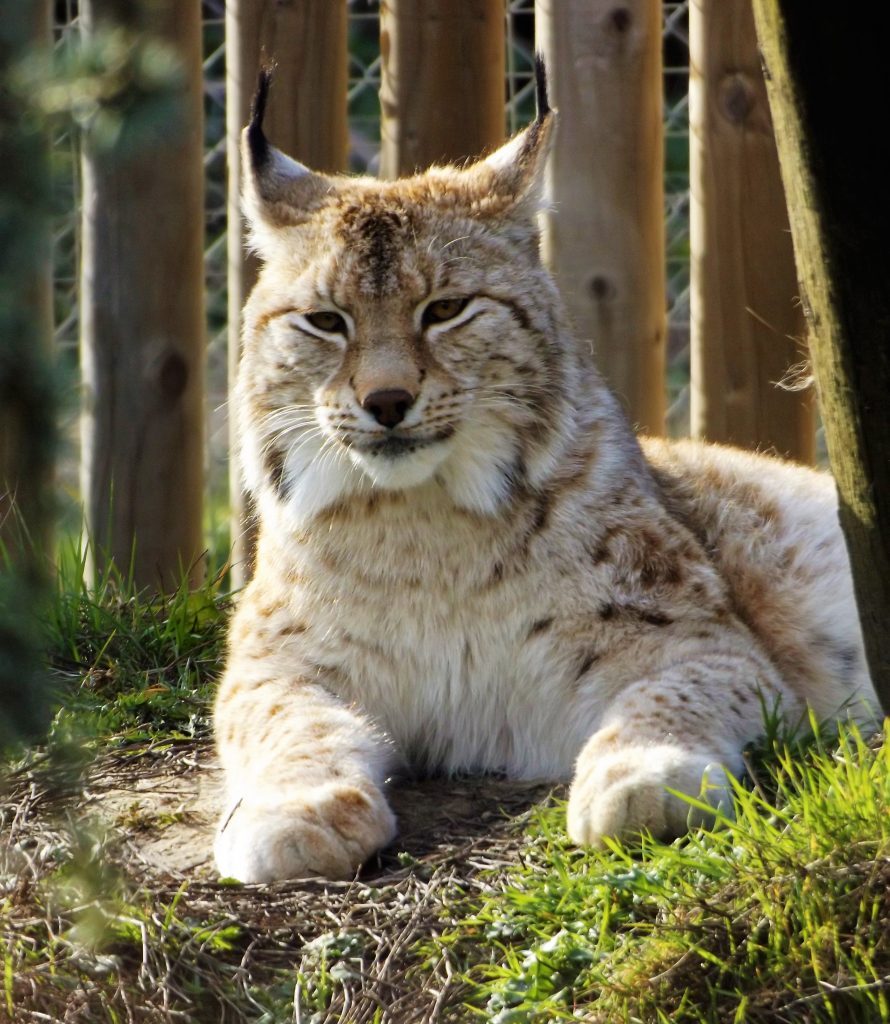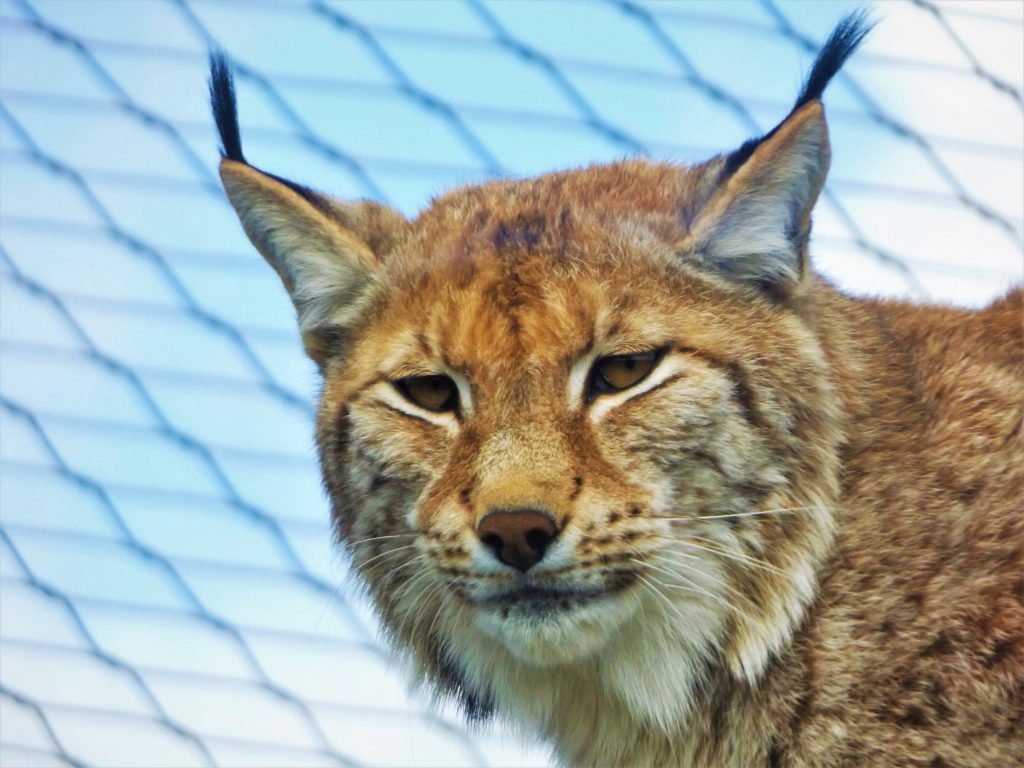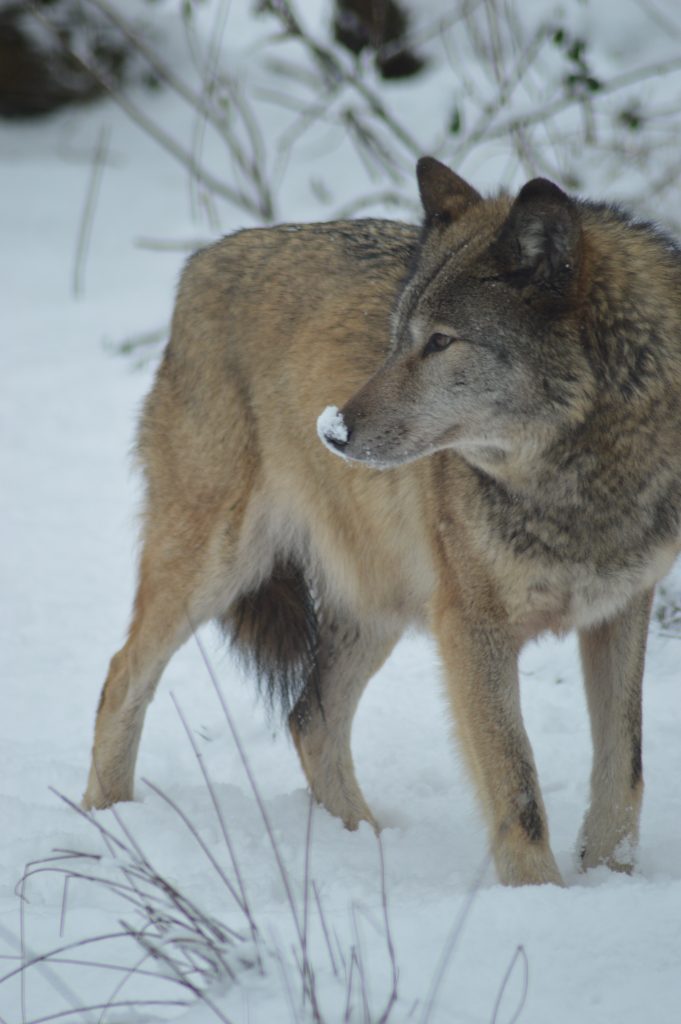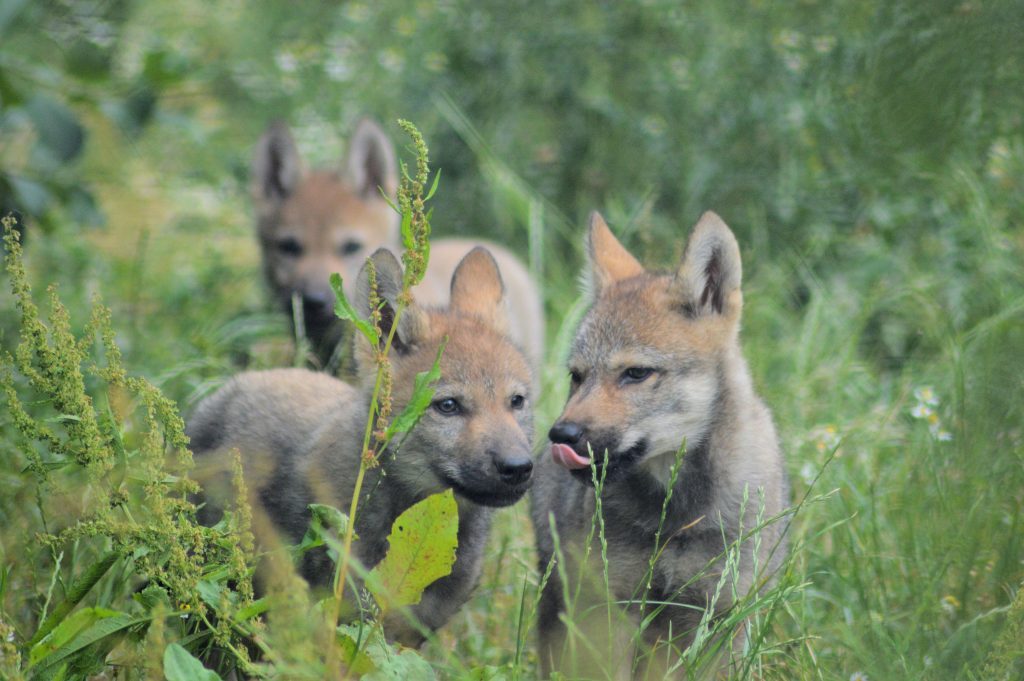In some countries walking through the wilderness can be dangerous. There are some impressive carnivores all around the world which could make it a hazardous pastime. Lions in Africa, polar bears in the arctic, crocodiles in Australia. Here in the UK we have it easy but we too had our own top predators in the past who played a valuable part in our ecosystem.
These carnivores were important for not only ensuring prey species populations didn’t grow too large but that they also remained strong as they picked off the old, sick and injured individuals. This means only the strong could to breed.
Lynx
The first is the lynx. This is a member of the cat family which like most is solitary except for breeding. Its favoured habitat is dense forests which it uses to hide itself either to stalk its prey or hide from larger predators. Their coat colour can range from grey to red/brown ad a varying amount of spots depending on where they originate. They have large feet that act like snowshoes and long legs which gives them an advantage in the snow. They are widely recognised by their tufted ears, which help with hearing and their short tail. Both their ears and tail have black tips.

They are crepuscular which means they are most active at dawn and dusk hiding away the rest of the time. Lynx are also very good at climbing which they use for spotting their prey or in ambushing it.
As far as vocalisations go, lynx have a varied repertoire including meows, hiss, coughs, grunts and purr. They will also make a noise which can only be described as caterwauling. This long, loud wailing sound helps attract a mate.

These carnivores are efficient and opportunistic hunters and can take down prey up to 4 times their size. They stalk their prey before pouncing on it at the last second either choking it by gripping the throat or placing its mouth over its mouth and nose to suffocate it.
Lynx can have 2-3 kittens in a litter after breeding in February/March. These kittens are born blind and are completely dependent on their mother but by the time they reach 6 weeks they are able to leave the den. They leave their mother when they turn 10 months.
The lynx became extinct in the UK roughly 1300 years ago due to hunting and loss of woodlands.
Brown Bear
Another predator that was found in the UK until 1000 years ago is the brown bear which again disappeared here due to hunting. They are a large animal that can stand at up to 7 ft. Unlike the lynx they are omnivores which means they do eat meat they can turn to roots, berries and fruit in leaner times. Brown bears reside in many habitats including forests and meadows and will go to where the food is and can be active day or night.
They are usually solitary except when a mother has cubs which stay with her until they reach about 2 ½ years old. This means the females usually breed every 3 years. They may however, come together when food is in abundance. When salmon travel up river to spawn for example, bears will gather at prime locations to take advantage. They need to eat as much as they can in order to hibernate through winter.
Pregnant females give birth during hibernation and wake with nursing cubs usually twins but up to 4. They will mate from May to mid-July in time for their hibernation. The female may mate with several males and so the male may guard her for up to 3 weeks. The bear is able to delay implantation, which means the fertilised ova will not attach to the uterus for up to 5 months, which is uncommon in mammals. This gives her time until hibernating when she will give birth between December and March.
European Grey Wolf
The final carnivore that definitely deserves a mention is the wolf. The wolf managed to hold on in the UK until the late 1700s. Wolves resemble large dogs with longer legs and larger feet. They have thick fur made up of a dense, soft undercoat topped with coarse guard hairs which helps keep them warm in cold weather. They are generally grey in colour with a lighter belly and black flecks aiding in camouflage to get up close to their prey.

Unlike the lynx and bear these carnivores live in packs of around 6-7 individuals up to 10 and almost all members are related. There is a strict hierarchy with only the dominant male and female allowed to breed. Subordinate wolves will show their submission with a cowering posture, tucking their tail between their legs while the dominant animal stands tail with its tail up.
The whole pack helps in the hunt and their best strategy is a chase. They get up as close as possible to their prey and then pursue it up to 5 kilometres. They are very intelligent and will select the perfect target, picking out a weaker animal and so improving their chances of success.
During January and April they will breed and around 9 weeks later they will give birth with a litter of 1 to up to 11 pups. They will raise the pups in the den for around 8-10 weeks and will be looked after by the pack. When they are eating solid foods the adults will either bring back whole food or swallow it before regurgitating it for them.

Threats and Ecosystems
All these animals were an important part of the British wilderness and helped maintain it. They can also act as ecosystem health indicators which show how healthy the environment is simply by their presence. The brown bear not only helped with prey species but also acted as a seed disperser and so the list of benefits these animals would have had on our woodlands and countryside as a whole would have been great.
However, the threats that face them where they still exist remains extensive. Habitat loss and fragmentation, poaching for fur and use in traditional Chinese medicines as well as conflict with local people leaves them with an uncertain future wherever they populate.
There is talk about reintroducing these carnivores back into the UK but there is a lot of work that should be done long before trials can take place, but we are still able to take steps to ensure the woodlands remain healthy. It is still nice to imagine what it would have been like to share a space with such awesome animals.
You can also discover more about another of the UK’s own carnivores my previous blog, The Highland Tiger.


